Pilgrims have been walking the Camino de Santiago for over a thousand years; and, many things about ‘the way’ have not changed.
Pilgrimage to Santiago de Compostela reached its peak during the Middle Ages and it probably constituted a major cultural aspect of that period of history in Europe. By the 12th century, the Camino had become a rather organized affair and what is widely regarded as the world’s first travel guide, the Codex Calixtinus from around 1140, provided the would-be pilgrim with the rudiments of what he or she would need to know. The commitment to walk the Camino must be just as strong today and the hospitaleros who assist the pilgrims remain.
A long standing tradition and frequently spoken phrase along the Camino is “Buen Camino”. When you pass a fellow pilgrim along the way I’m told we say “buen camino”, to which the pilgrim responds “buen camino”. Within this little phrase there is a greeting, a wishing of goodwill and an acknowledgment that you are sharing the Camino.
Then and Now
Pilgrims from centuries ago did not have the equipment we have today to make our journey easier. They walked with a staff and a bag, most probably wearing sandals. I’ll have my Gregory backpack, Osprey hydration reservoir, fleece jacket , waterproof jacket and Lowa Bora hiking shoes. Tucked inside my backpack, I’ll have the small guidebook, A Pilgrim’s Guide to the Camino de Santiago by John Brierley (that has become the ‘bible’ of walking the camino) which outlines the path, the stages and towns in far more detail than the Codex Calixtinus did over a thousand years ago. Some aspects of the modern Camino are fundamentally the same as they were for the medieval peregrino: as a practical affair, the Camino is a long walk. While underway, the peregrino needs support for food, lodging and direction. Where the medieval peregrino was seeking forgiveness for sins or for the Saint’s assistance in some matter, most modern peregrinos are there for a variety of reasons: spiritual, adventure, personal growth.
I have been trying to find when the compostela or certificate of completion of the Camino from the cathedral in Santiago came into being but the answer to that custom’s time and origin is yet unknown to me. The modern peregrino carries a pilgrim’s credential or passport which is stamped in the various cities and villages passed through. This record serves as proof that the route has indeed been walked or bicycled and is presented at the pilgrim office in Santiago de Compostela to receive a certificate of completion. Here’s what my passport looks like with blank (unstamped) pages:
The Challenge
I’ve read posts by individuals in the camino forums who walked the camino prior to cell phones and social media about how discouraged they are by the entrance of technology to ‘the way‘. Our culture has changed drastically over the last twenty years with the reliance of cell phones, even when traveling in foreign countries. Yet, even twenty years ago, the camino was not walked in the same fashion as the original pilgrims. Times change.
Technology on the Camino
The are two apps that I will be using that will assist me on my journey:
Available for all the different caminos, I purchased the Camino Frances version for $4.99.
GPS enabled, it will help me find Albergues, hotels, pensions, and cases rurales. In particular, I think this feature will be helpful – Scrollable Elevation Map. I’ll let you know what I think of it once I am there and can use it.
This app was created so that runners can track their course, their pace, calorie burn and total active time. I started using it a last week and love it. Like the Wise Pilgrim app it turns your phone into a GPS tracker.
One of the most interesting aspects for me is the Elevation Chart since walking hills is an important part of my Camino training. Here is a screenshot of the first half of last Saturday’s hike: 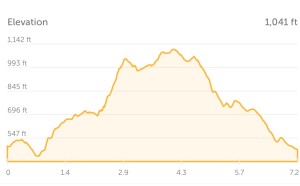
We now have the technology to assist us on our Camino; and, to let our friends and family know we are well. It’s still a choice to ‘unplug’ and one I will be making except as needed. I believe to not use some of the available benefits of technology would be like saying we can’t use Brierley’s guide because the original pilgrims didn’t have it. We just need to know when to use it, and when to turn it off! All my clients and staff know that I will be unplugged so that I can tune into the inner journey that will unfold.
One week from today I will depart Seattle and the adventure will officially begin. With or without technology, I embrace the unknowns and uncertainties, knowing that I am staring challenges in the face – setting my intention to stay present and trusting my journey to a higher source.
Buen Camino!
“What would it be like to open our hearts to fear,
to befriend it with wonder,
as one would a deer in the forest?”
~Dawna Markova
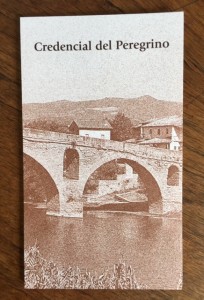
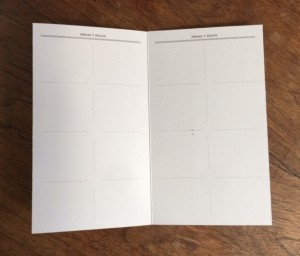
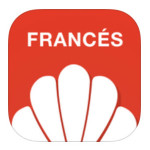
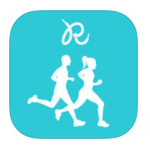
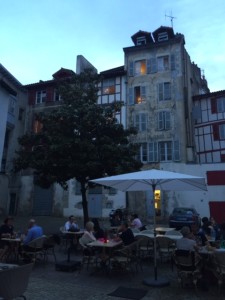
Sorry to hear about your pulled hamstring. It happens but at least you can make a full recovery at home and continue with your writing.
Did you have a Camino playlist? I brought Angel Olsen with me and I’m seeing her in London tomorrow; keeping the Camino alive…
Hi Tim, How was the concert??? I did have a playlist, but surprisingly to me, I never used it! Guess I got used to the cuckoos and frogs. ~Susan
Hi Susan, you’re right about the cuckoos. I played music when I was alone at night before I reached the Camino Frances. It’s wonderful to hear live music especially when you see a favourite artist for the first time.
I’m meant to be commenting on your latest blog but I drifted into your earlier postings and forgot to return to the present. Anyway I hope you are resting that hamstring.
Tim